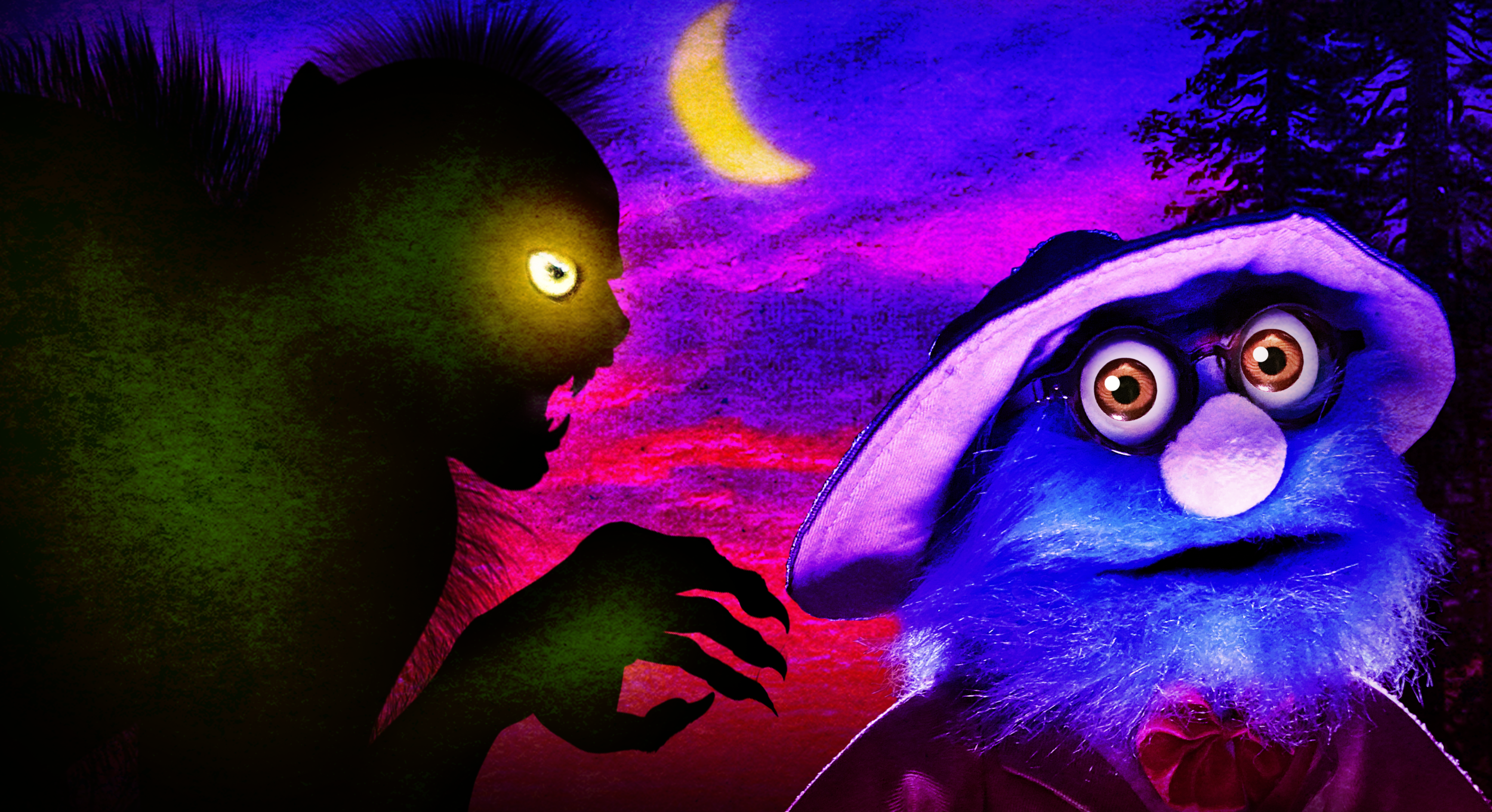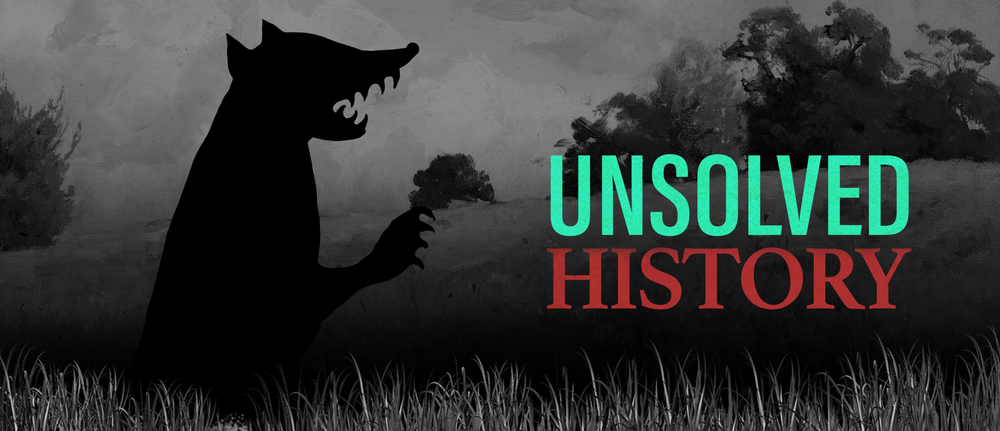
lesson 09 - The Beast of Gévaudan
Hello! And welcome back to Puppet History: Online University for your spring semester. Here we are, back together again, virtually learning about the wildest stories you don’t learn in school, from a tiny blue professor who is too important to send out these supplementary materials.
We start off this semester in 1760s France — not the easiest time or place to live, depending on your class status. In 1764, France was coming off a long war — seven years long, to be exact. The French had not fared well. They’d lost Canada to the British, and economically, they weren’t doing so hot. The poor were really poor. King Louis XV was king in those days; he reigned for nearly 60 years, but not well. His successor, Louis XVI, was France’s last king — you might be familiar with the headless fate of him and his wife, Marie Antoinette. For context, the French Revolution took place about 20 years after the events of Gévaudan.
So you can see how France really needed a win in the mid 1760s, and the Beast of Gévaudan could’ve (would’ve, should’ve) been the perfect opportunity. Gévaudan, a region in southern France, was sort of a backwoods area, with rugged highlands, steep slopes, and moors, making it poorly suited to agriculture and thus fairly unpopulated — the whole region had a population of under 120,000 in the 1760s. For the sophisticated Parisian city folk reading about the beast’s attacks, the area was the perfect setting for such fantastical tales: untamed wilderness where anything could happen. For those living in Gévaudan, without farming, the keeping of sheep and cattle were two of the main ways they could make a living. This meant, yes, that teens — and more often than not, teenage girls (who really were closer to adults than we’d think of them today, due to the life expectancy of the time) — were out in the fields all alone and unprotected, herding sheep, aka wolf snacks.
A quick note on life expectancy: The Professor shared that the average life expectancy in France at the time was just 20–25, which is true. But life expectancy during this time turns out to be a tenuous, not-straightforward thing! Basically — infant mortality rates were super high at the time, so life expectancy at birth was 20–25 (sources vary). BUT if you made it to age 20, your life expectancy was age 42–43. Basically, the further you got, the further you were expected to go. There were people who reached what we’d now consider old age. Society probably thought those people were like, saints or witches or something. You know, the closely related vocations of saints and witches. So hard to tell them apart…
Anyway, it’s unknown at what point authorities were finally like, “OK, actually it does seem like these attacks are kind of a legit problem to be dealt with,” but eventually they reached that point and set about to find a solution. When locals couldn’t be motivated to hunt down the beast themselves (you can hardly blame them, when they didn’t have sufficient weapons), the big guns, aka Jean-Baptiste Duhamel, got called in.
Duhamel had been a French captain in the Seven Years’ War (remember — not something to be proud of), and he was eager to recover a bit of honor and maybe even a little glory, if he was being honest. He chronicled his hunt closely via letters, and told the commander’s secretary: “I sincerely hope that I will be able to announce in my next letter … that the monster is no more, and that it was the dragoon company of His Serene Highness that put it to death.” Historian Jay M. Smith, author of Monsters of the Gévaudan: The Making of a Beast and probably the foremost expert on the subject, says that Duhamel’s letters are probably what inflated the story of the beast into seeming supernatural and unstoppable. Smith even speculates that Duhamel may have talked up the beast to make excuses for why he hadn’t yet been successful on his hunt. (Relatable tbh — whomst among us hasn’t externally been like, “This is actually really hard,” when internally you’re like, “WHY HAVEN’T I FINISHED THIS THING YET?!”) Apparently it was Duhamel, who had several close calls with the beast, who described it as a “weird hybrid animal that was part horse, part lion, part hyena—jaws like a vise, six talons on its paws.”
Here are a couple extra notable beast attack tidbits for ya. First is the story of Jacques Portefaix. He and a group of fellow children were tending to cattle in a meadow in January 1765 when the beast attacked. Together, they managed to scare it off wielding their staffs; Portefaix especially had apparently shown extraordinary bravery. King Louis XV gave all of the children a monetary reward, but additionally had Portefaix educated at the king’s expense. The other is Marie-Jeanne Vallet, a pregnant mother of six who defended herself and her children against the beast in August 1765. She reportedly snatched one of her children out of the beast’s mouth and even managed to wound the beast in the process. These two became something of folk heroes as the stories of the Beast’s attacks went on.
(By the way, Ryan and Sara were wondering where that girl’s head was found a week later — presumably, at what distance from the rest of her body — and sadly, we don’t have those details... but we do know it was her skull, specifically, that was found. Yikes!)
The Professor discussed how the local Gévaudan newspaper, the Courrier d’Avignon, had blown up this story into one of the first international news stories, and really, many think that’s the main difference between this bête and past bêtes: the volume of its press coverage. There was literally less news to write about after the end of the Seven Years’ War, and François Morénas, creator and editor of the Courrier d’Avignon, was innovative to pick up on this story and write about it in the newspaper. And of course, like the children’s game “Telephone,” as the stories traveled from Avignon to Paris and beyond, they evolved and got wilder and wilder. Morénas does not seem to have cared much about fact-checking — sensationalism sells more papers. (As today’s fake news accounts well know!)
We’re now at the point in our story (as it happens with every story) where I give you a note on werewolves. According to Smith, open belief of werewolves, as well as witchcraft and presumably similar supernatural beings, had waned in French society over the course of the 17th century; however, this belief remained not uncommon in the 18th-century French countryside. Smith details, “Physical features remarked by those who had allegedly laid eyes on the beast — including not only the stench but also long claws, unusually large teeth, and at times, standing on its hind legs — showed a frightening consistency with the enduring popular image of the werewolf.” Before Jay M. Smith, history tended towards blaming the silly, uneducated peasants for why people thought this was a supernatural “beast” and not just a wolf; his research has shown the dominant effect of the press in that matter.
With so many centuries of being terrorized by wolves, it isn’t surprising that, as European society expanded and gun laws changed, there wasn’t much sentimentality towards the native wolf population. Animal conservation wasn’t really a thing until the 20th century, after all, so there’s a distinct correlation between the number of wolf attacks decreasing over the course of modernity and the decreasing number of wolves themselves. For a while, they were pretty much gone. In recent years, though, wolves have made a bit of a comeback in Europe, but they are still controversial creatures — not everyone wants them; or at least, they’d like to really put a cap on their numbers. Meanwhile, here in California, I’ve been closely monitoring (i.e. I subscribe to a newsletter that occasionally has updates) our reemerging wolf population! (Population: 1.)




